I didn’t buy this camera, I “borrowed” it from my Dad. I wanted a camera I could comfortably take to the beach and in the sea, that could take a bit of an unintentional knock and wouldn’t be likely to get nicked. He offered me his brand new, waterproof Nikon W300 (black and very nice but no RAW files!?). No, I decided I was going (pretty much) all film on this trip and I wanted the Sea & Sea Motormarine.
The Sea & Sea Motormarine EX II is a strange beast. My Dad owns one because he’s a scuba diver. It has a huge port for the additional flash that can be added to the side. I didn’t take this as I wasn’t going to be deep enough to need it, the most I was going to do was some snorkelling where the built in flash would suffice if I had wanted to use it.
The Motormarine’s lens is a 35mm focal length which is my preferred focal length. It means you can capture seascapes easily but it’s not so wide that you can’t catch some wildlife. A very cool thing about the Motormarine is that you can attach different focal length adapters underwater with a simple screw mount on the front. I won’t be reviewing these here because I don’t have them, however, there’s no other camera I’ve found that gives you the ability to do that. The Nikonos, for instance, requires a lens change somewhere dry so you’re stuck with your choice once you’re in the water.
The Sea & Sea Motormarine EX II has an automatic winder motor which is useful when you’re underwater. I, however, thought it hadn’t caught because the winder doesn’t wind the tab all the way in, so I reused the roll and now have a roll of double exposures. It’s these kind of mistakes that make me feel more in touch with my photography. Plus, some of them actually look cool so I’ll just post them on instagram as intentional! If I wanted to know exactly what I was getting every time I would have taken the Nikon W300.
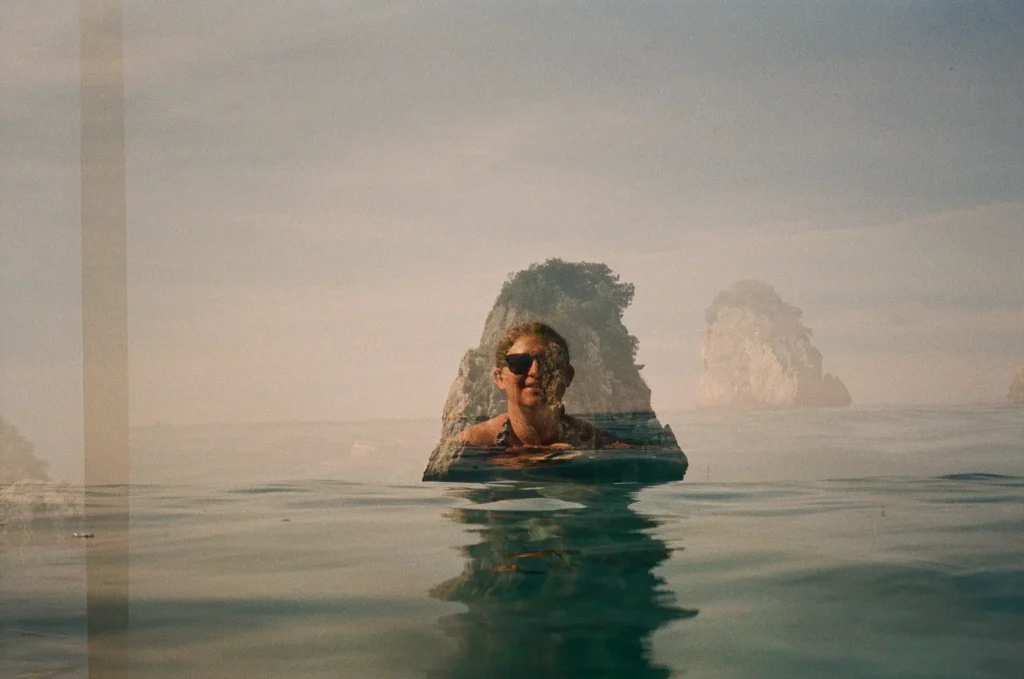
The Motormarine also takes AA batteries which is a god send when travelling. I’ve had the batteries in for a few trips now and they still haven’t needed to be changed but looking for strange shaped batteries when you’re away is not how I’d like to spend my time. I’m sure they go faster when the flash is attached but still, that’s pretty good.
The body is solid plastic and as you’ve seen it’s neon yellow. This is brilliant because it also floats which is exactly what you want in a camera you’re going to be near the sea in. The Nikon W300 (which I know is digital but bear with me) sinks, this is not good because it’s also black and you’ll never see it again if it goes in the drink. Just try and get rid of the Motormarine – you could probably see it on Google Maps if you dropped it somewhere.
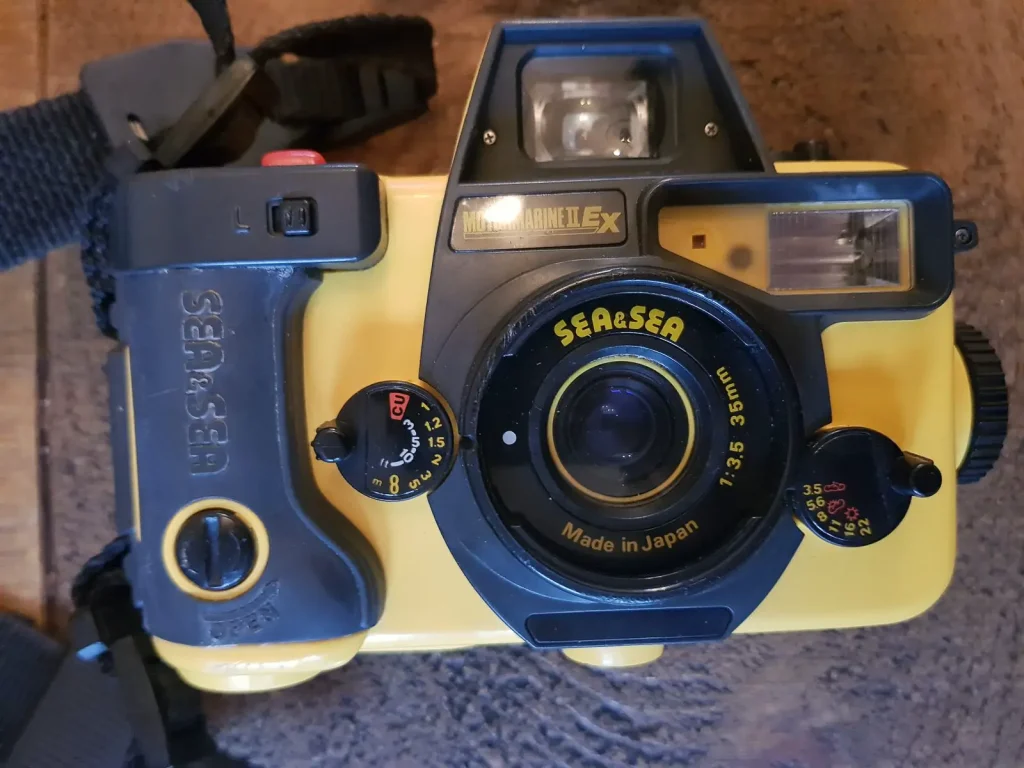
It also means you can let go of it when you’re snorkelling to dive down and get a shell and it will be waiting for you when you return. I found swimming with the Sea & Sea strap that comes with it comfortable as it was slung over my shoulder and bobbed out behind my strokes.
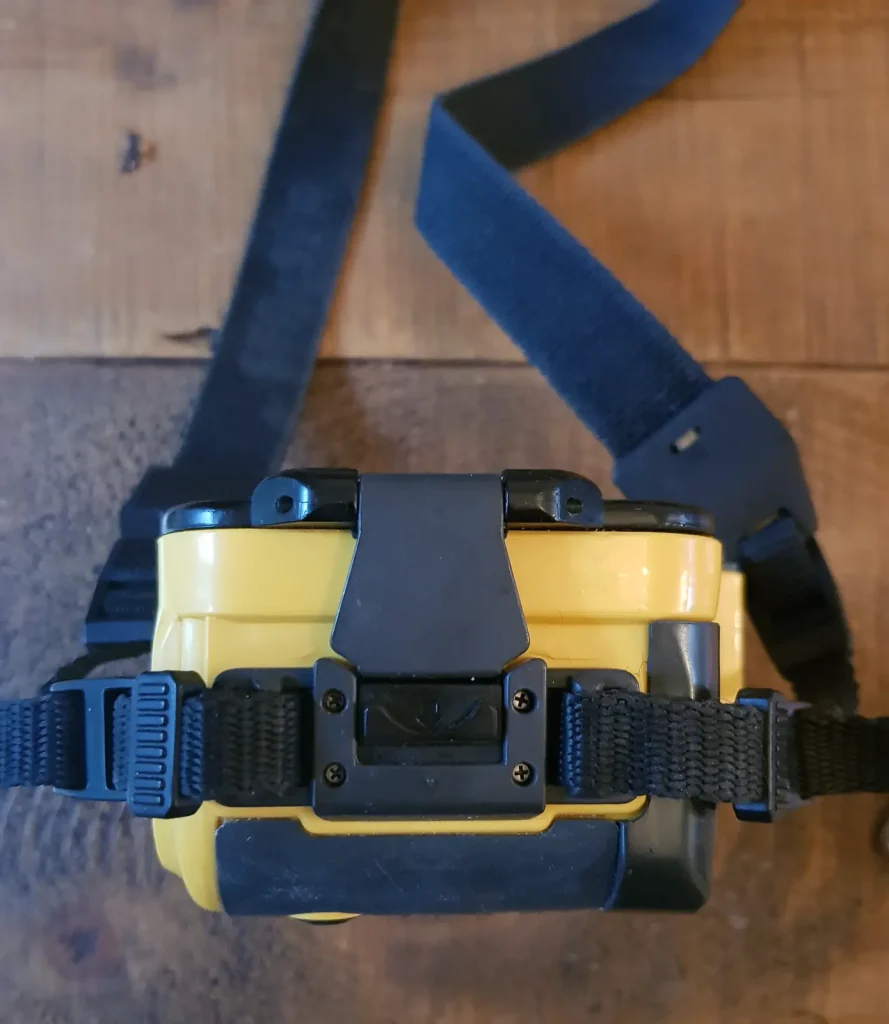
All the waterproof seals feel reliable and you’d be hard pushed to accidentally open it. The battery compartment needs unlocking with a screwdriver/coin and the back has a lever/catch thing that feels secure too.
The controls are also reasonably easy to use. The focus and apertures are on the front with the shutter on top (which never left 125) so you can look down at them and see what’s selected which is useful. I know with a Nikonos you have to mount the lens upside down so when you flip the camera over you can read what the settings are. I found the controls easy to use with bare hands – my dad says it was fine with diving gloves too.
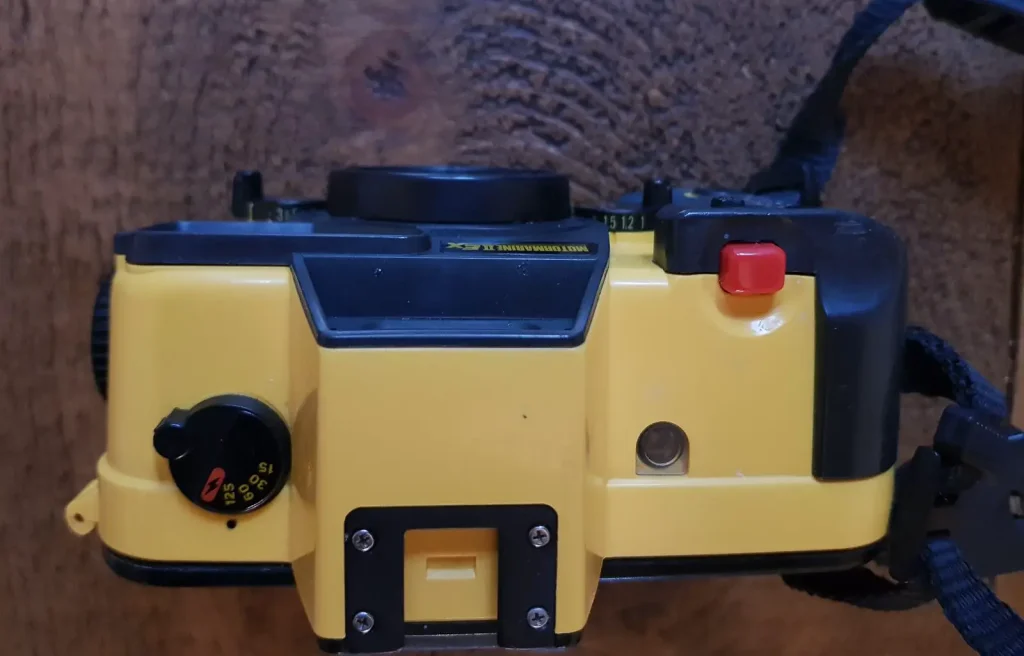
There’s also a shutter lock which is great for when you’re chucking it in your bag. The depression in the back leaves your finger just over the shutter button which is nice. It does feel like it was built to be used.
But, this is where things get a bit weird for an underwater camera. The DX coding only reads ISO 50, 100 or 400. The meter only tells you that you’re underexposed when you half press the shutter, the signifier being a small red light at the bottom of the viewfinder which isn’t that clear – especially when you are wearing a mask. I had preemptively bought Fuji C200 for the trip. I’m usually okay to expose by eye on land in the Greek sunshine, but this gets more difficult underwater.
One thing I don’t understand is why it doesn’t use DX200. 200 asa seems the logical film speed for sun and underwater because the top shutter speed is 125. As such, 400 starts to push the Sunny 16 on land and 100 asa isn’t bright enough for underwater. Obviously this relies on me being in a bright place but it’s almost as if it was never considered that the camera would be used in the sunshine. If it read 800 asa film then I’d know it was for deeper diving and I was using it for the wrong thing – but it doesn’t. There is a handy guide about exposures and depth stuck on the back:
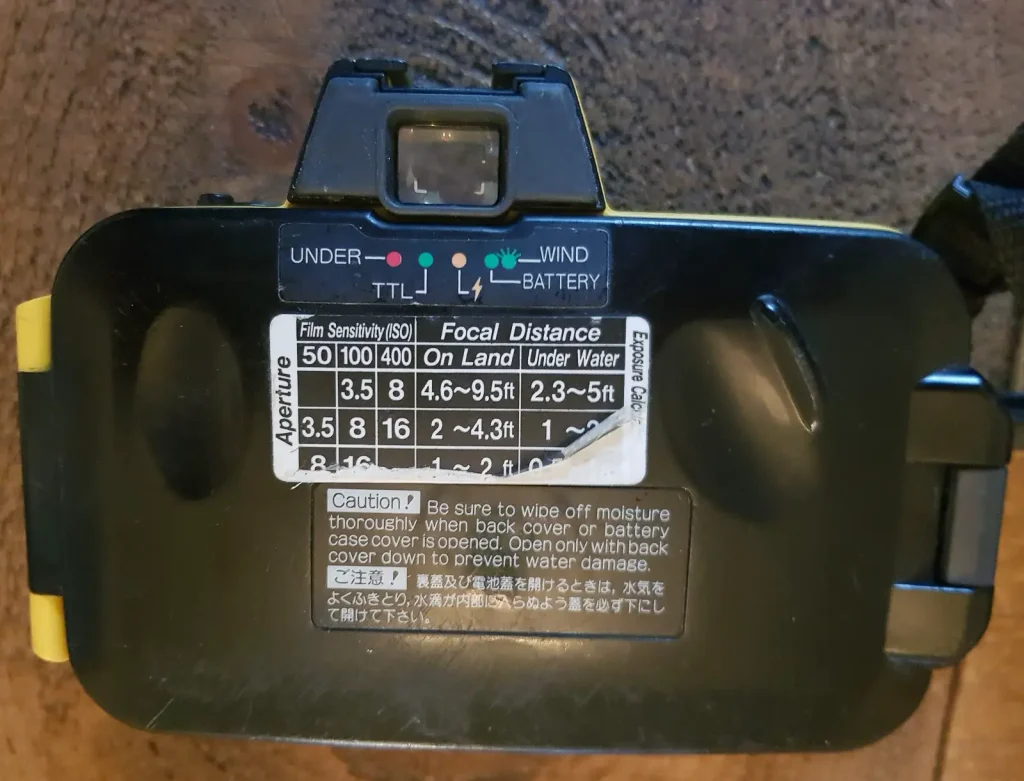
What this camera really needs is shutter 1/250th or more. 1/250th would also mean that I could use a higher asa film underwater to catch wildlife which doesn’t exactly wait around. Also, as you’re in water, it’s difficult to hold perfectly still. Even with the flash the top shutter is 125, so it’s easy to get motion blur, especially when shooting fish. For comparison, the comparable Nikonos V has a top shutter speed of a 1000 and can meter at EI1600. The aperture on the Sea & Sea Motormarine is f/3.5 to f/22 which is a decent enough range, I wouldn’t want any shallower a depth of field with zone focusing anyway!
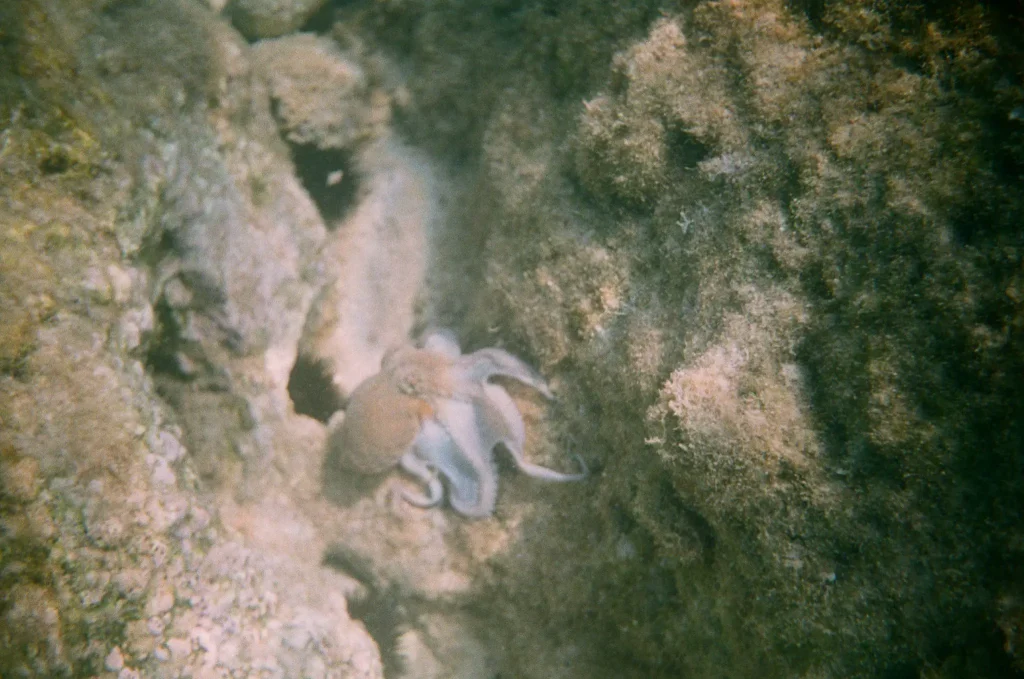
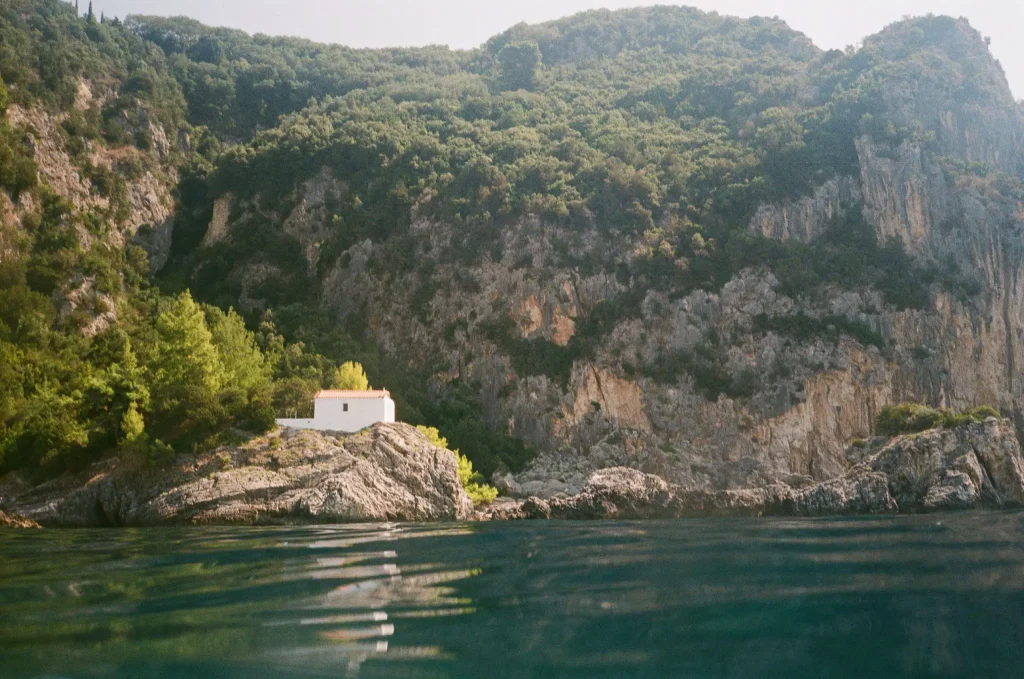
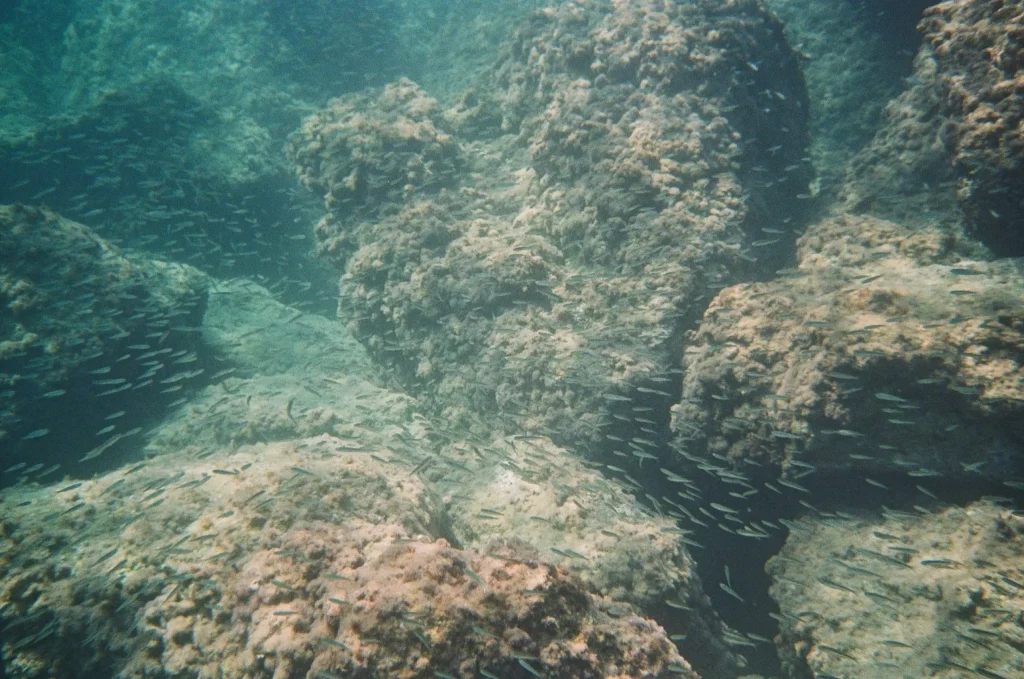
This camera is not as cool or as versatile as other underwater cameras that are on offer, but it’s also nowhere near their price point. I’ve seen these on ebay for £30. If you want to have some fun taking some photos on the beach and in the sea, but you don’t want to risk spending a fortune on something that could flood immediately, then this camera is great.
I asked my Dad what he thought about the camera when he was diving with it. He agreed with the shutter/film speed problems but also said that deeper down this meant reliance on the large flash, this becomes a problem on the bottom as plankton and silt creates bounce back and he would rather have been able to use faster film with a lightmeter which would have taken some of the guesswork out.
This camera has flaws as mentioned above, but I still had fun using it and I got some good shots. I wouldn’t have taken anything more expensive swimming and climbing so I wouldn’t have got the shots anyway. Maybe the old adage “the best camera is the one you have with you” is true.
Share this post:
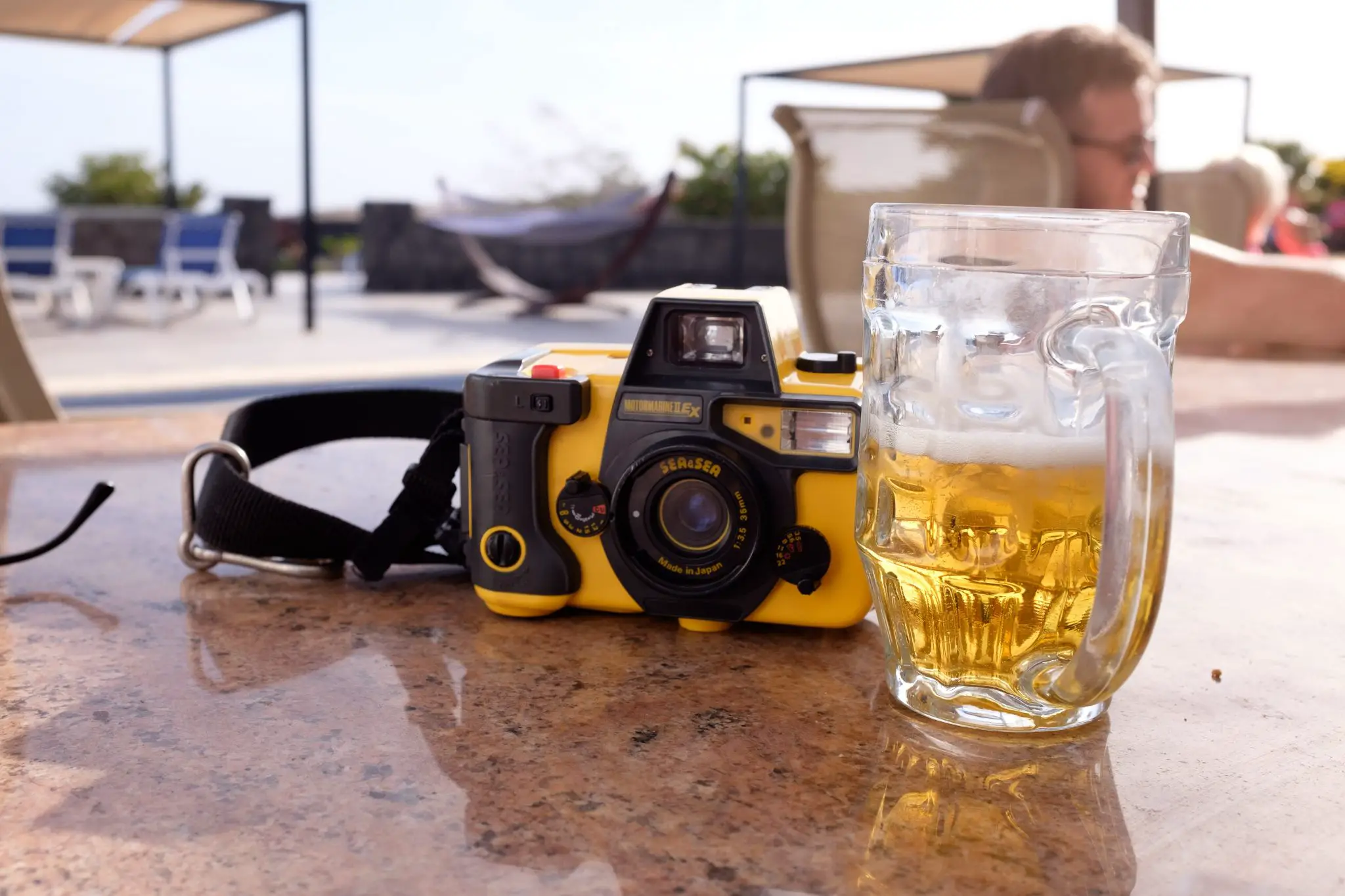








Comments
Sroyon on Sea & Sea Motormarine EX II Review – By Andy Larner
Comment posted: 13/07/2021